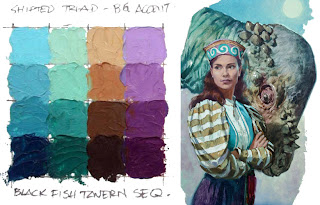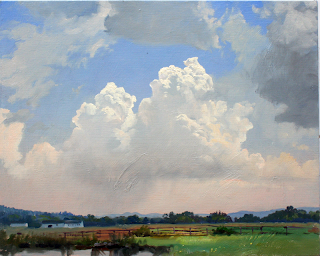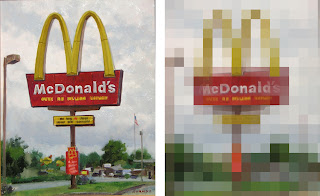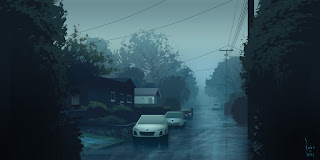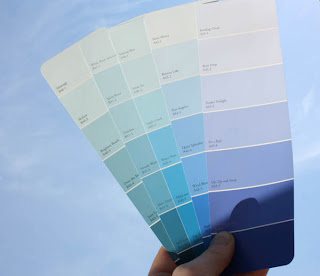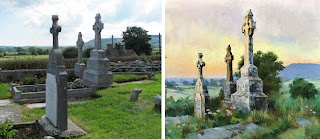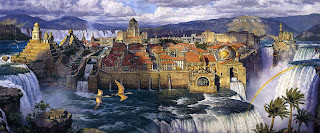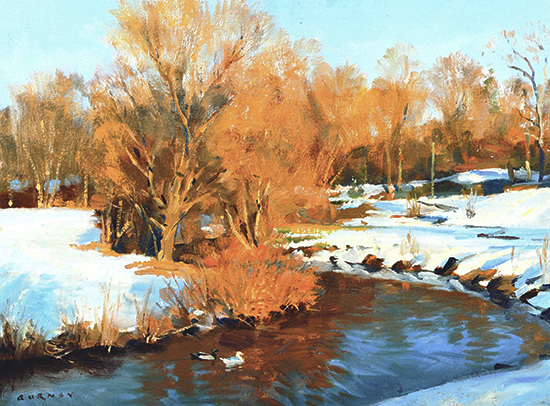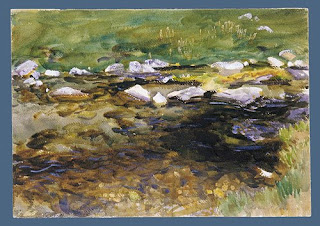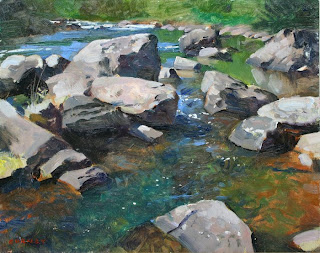Graphic LA - pgs 38-67
The effect of perspective is more important than the actual objects.
Simple design forced into the fewest values.
Feedback loop while drawing: is it looking the way I pictured it? How am I picturing it?
Block in value pattern that expresses the scene clearly. Then convert to color.
Graphic in nature. Dimensional in execution.
It's about the larger shapes and design AND the idea behind it.
When sketching from life, you have to alter the values to produce the design that makes the scene easiest to read and states the intent/focus.
Find and emphasize the rhythms!
Color and Light - Chapter 10
Atmospheric Effects
Sky Blue
- Color of the sky changes based on where you're looking depending on the time of day.
- Mixtures must shift from top to bottom as well as from side to side.
Atmospheric Perspective
The way the appearance of objects changes as they are viewed at a distance through layers of illuminated air.
- The bold colors of the foreground gradually transform until they match the sky.
- Dust particles and distance have an impact on the atmospheric conditions.
Reverse Atmospheric Perspective
General rule: Warm colors advance and cool colors recede.
Broken rule: The entire scene gets warmer as it goes back.
This happens when vapor or dust particles in the air gather around the light source (usually the sun).
Golden Hour Lighting
Strong color is fleeting in nature.
- Dawn or dusk are the times when colors become bold and dramatic.
The sun is so low in the sky, the light travels almost parallel to the surface of the earth.
Planes and objects are lit directly at this time - enhancing the colors we see.
Sunsets
Sunsets provide many colors because the sun is interacting with so many different layers of air, dust, and clouds.
When air is full of moisture and dust, the sunset will be accompanied by more conspicuous red and yellow clouds. Boldest colors will be found nearest where the sun crosses the horizon.
Fog, Mist, Smoke, Dust
Contrast drops off rapidly as forms recede in space.
Light seems to come from all directions.
Rainbows
Tips:
- The colors of the rainbow should always be lighter than the background, because the colored light of the rainbow is added to the light in the scene behind it.
Skyholes and Foliage
Tips:
- Smaller skyholes should be painted a little darker than the overall sky behind the tree.
- Soften the edges of smaller skyholes.
- Include transparency in foliage.
Sunbeams and Shadowbeams
Occur when:
- High screen of clouds, foliage, or architecture is punctured by a few openings.
- The air is filled with dust, vapor, smoke, or smog.
- The view is toward the sun.
Dappled Light
Sunlight shining through the spaces between the leaves of a tree.
Spots will move and/or disappear when the wind blows and cloud coverage sets in.
Cloud Shadows
Clouds interrupt the view towards the sun.
Patches of sunlight drift across the landscape surrounded by cloud shadows.
USE THIS TOOL TO CONTROL THE VIEWS ATTENTION!
Illuminated Foreground
Illuminate the immediate foreground in light and put the middle distance into shadow.
Snow and Ice
Snow is denser than clouds or foam, so it's whiter.
Snow picks up everything around it, especially in shadow.
Cast shadows on snow take on the color of the sky. Shadows on a partly cloudy day are grayer.
Water: Reflection and Transparency
Reflection: light rays bounce off the surface
Refraction: light rays travel down into the water
Mountain Streams
Water in mountain streams behaves differently in mountain streams.
Color of the stream bottom changes.
Foam forms sometimes.
Color Underwater
Water selectively filters out colors of light passing through it.
At different levels, different light is filtered out. This results in different lighting.


